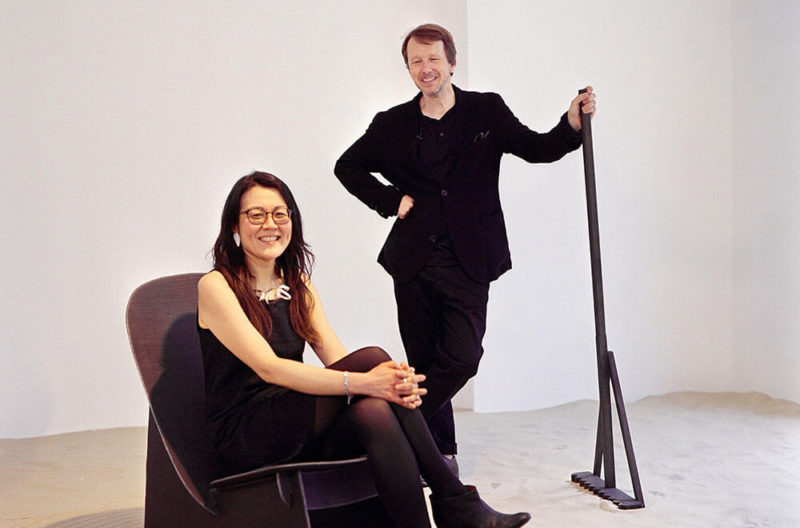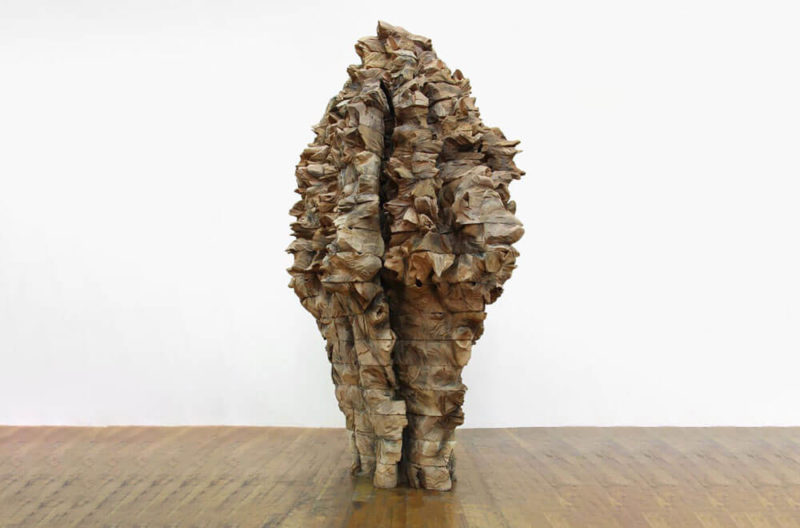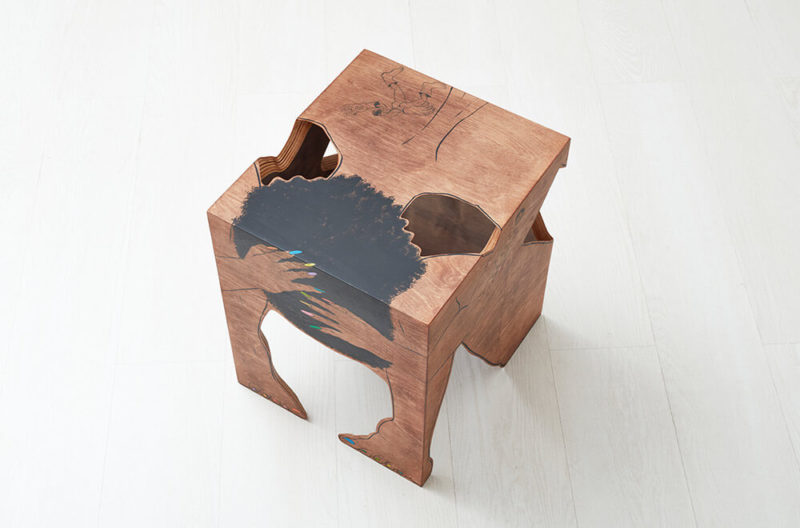London Dispatch: May 2021
Like the spring flowers, galleries are opening for the first time this year – offering a tempting array of collectible design.
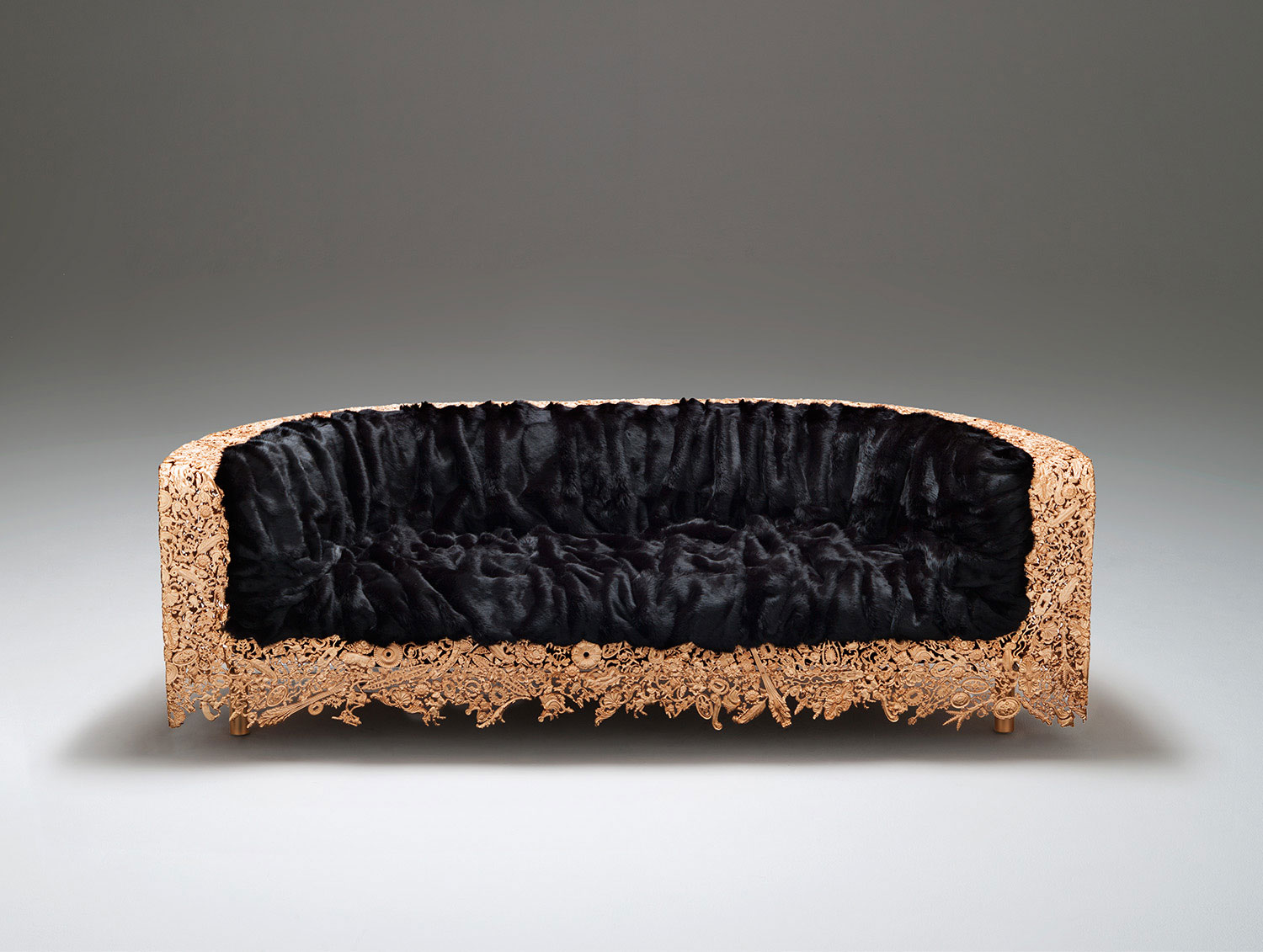
Campana Brothers, ‘Numa’ sofa, 2014
COURTESY: David Gill
MUSEUMS DREW THE short straw in the Government’s roadmap to lifting the last lockdown imposed in England last December. Arbitrarily classified as ‘indoor entertainment’ spaces, they will reopen on 17th May, at the earliest. By comparison, commercial galleries lucked out – they were permitted to reopen on 12th April. So design buffs – rejoicing that they can see design again in the flesh – have headed to the galleries first. The Design Edit checked out four key London shows – the first of 2021!
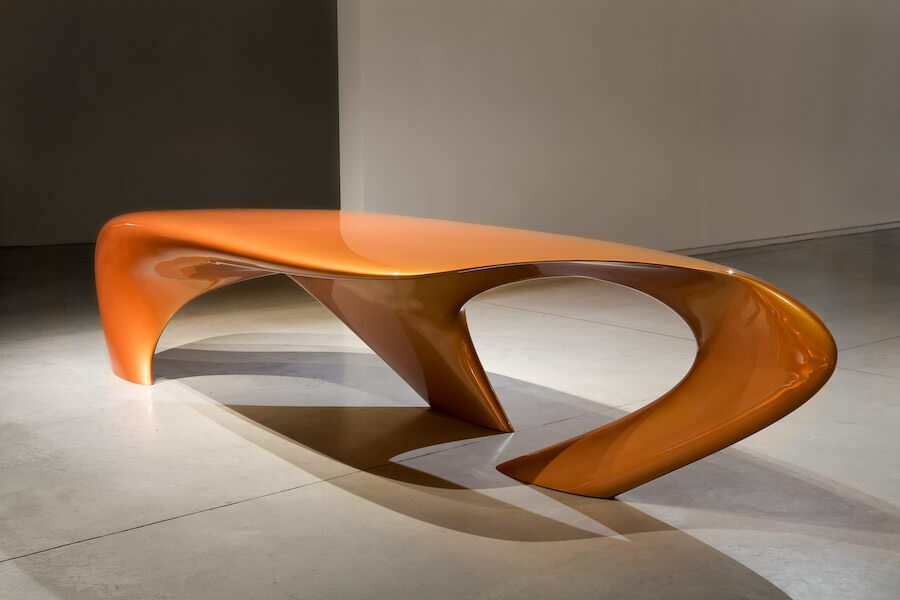
Zaha Hadid, ‘Dune’ table, 2007
COURTESY: David Gill
Mixed Show
David Gill
This group show at David Gill is packed with a stupendously eclectic assortment of pieces – both new and from the relatively recent past – created by its many protégés. I wondered if the gallery sees this extravagant display as a way to satisfy design aficionados, deprived for so long of physical shows.
In one corner is a homage to Zaha Hadid that displays her classic ‘Dune’ table of 2007 juxtaposed with her 2013 ‘Liquid Glacial’ chairs – ethereal and transparent but for their sapphire blue highlights. Translucency is a quality shared by several other pieces, including Mattia Bonetti’s over-the-top organic ‘Bubblegum Acrylic’ table and comparatively understated ‘Spheres’ coffee table in acrylic and steel.
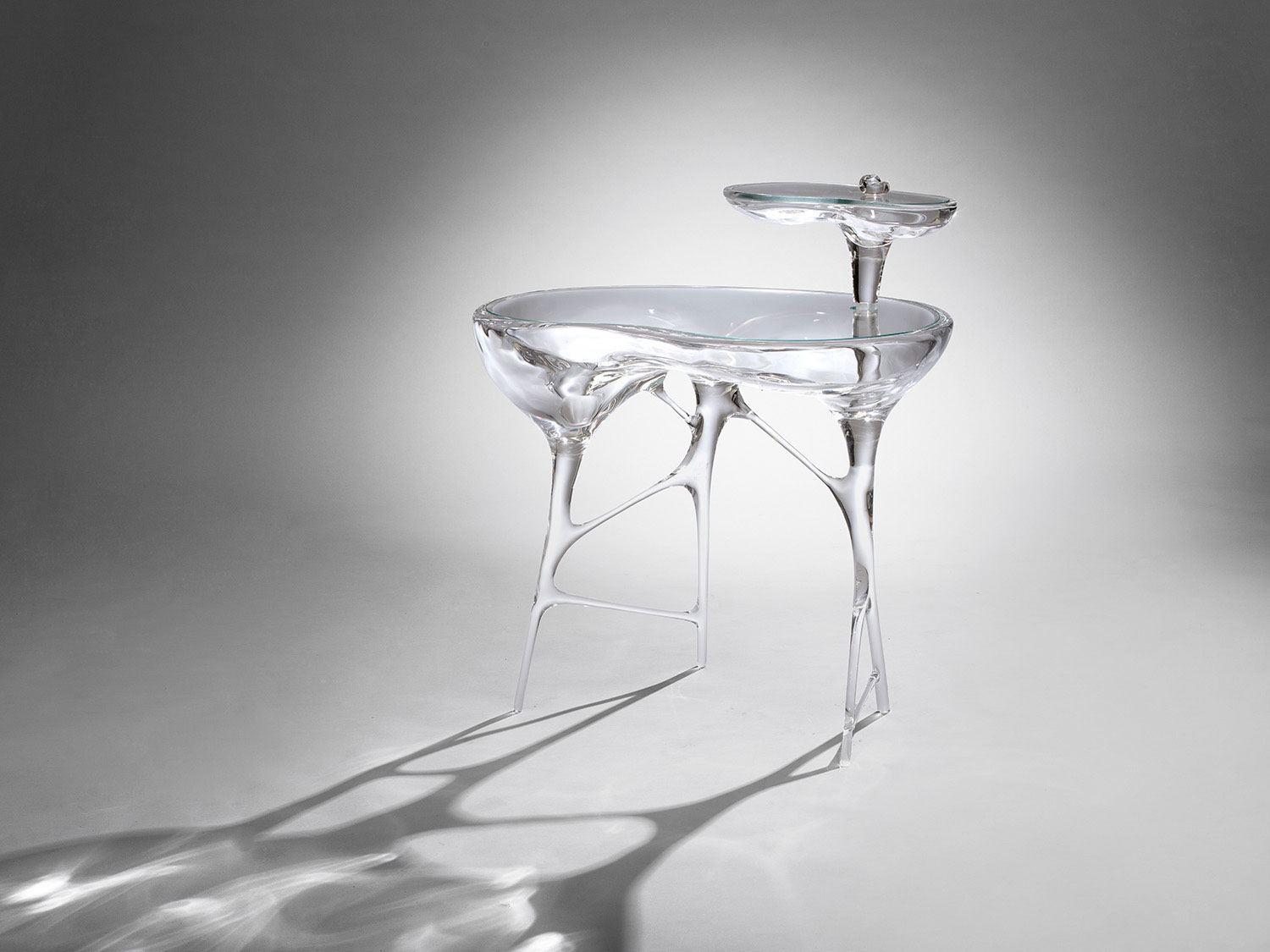
Mattia Bonetti, ‘Bubblegum Acrylic’ side table, 2014
COURTESY: David Gill
A neo-baroque aesthetic is part of David Gill’s DNA, evidenced here by an abundance of gold finishes. But these appear to be ironic – as if questioning the innate value of gold. Take Yves Klein’s 1961 ‘MonogoldTM’ table stuffed with 3,000 crumpled sheets of gold leaf. Then there’s the Campana Brothers’s outlandish ‘Numa’ sofa with its rumpled fake-fur upholstery and frame crawling with miniature decorative mouldings – a paean to unashamed luxury but also, perhaps, a send-up of vacuous materialism.
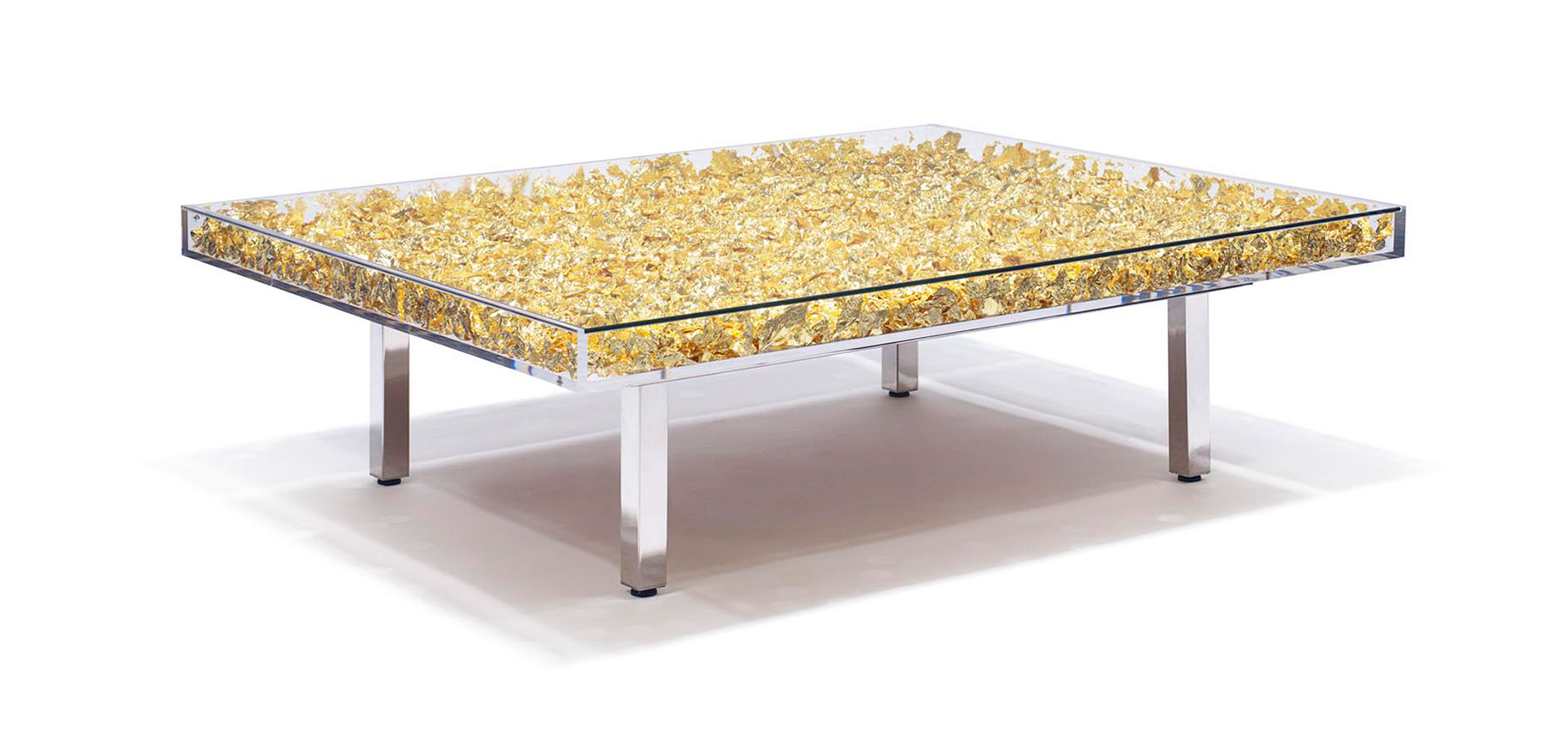
Yves Klein, ‘Monogold™’ table, 1961
COURTESY: David Gill
Aki+Arnaud Cooren: Tiss-Tiss
Carpenters Workshop Gallery
From David Gill’s gallery, I walked over to Carpenters Workshop Gallery and popped into Aki+Arnaud Cooren’s first solo show in the UK. The Paris-based, Japanese-French design duo’s ‘Tiss-Tiss’ collection comprises nine works – encompassing chairs, a dining table, bedside tables, stools, a bench, as well as the whimsical ‘Ishigaki’ lamp fashioned from linen, carbon, resin, steel and bamboo.
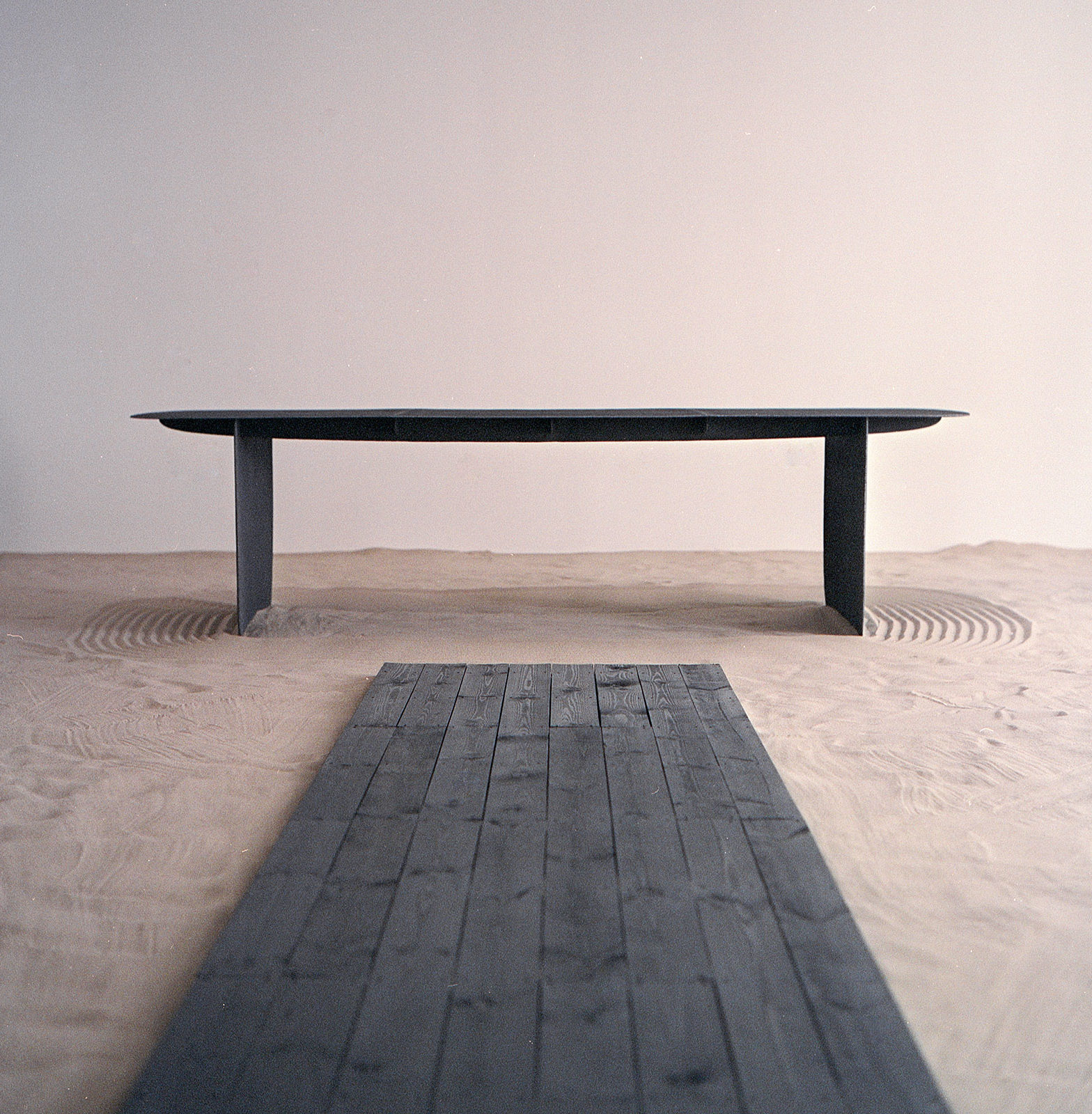
Aki+Arnaud Cooren, ‘Tiss-Tiss Dining Table’, 2019
COURTESY: Aki+Arnaud Cooren & Carpenters Workshop Gallery / PHOTOGRAPH: Teddy Freeman
On arrival, I thought I’d put my foot in it, literally, when I slipped off a boardwalk into the elegantly raked sand next to it. A gallery assistant assured me I needn’t worry, but was she being polite? Since the furniture is displayed on wall-to-wall sand either side of linked boardwalks, recalling an art installation with borders you’re not meant to cross, this creates a frisson of uncertainty. But when I met Aki Cooren herself, she reassured me that stepping on the Zen garden-like sand is permissible, and I soon notice others insouciantly walking on it. This makes more sense when she tells me that central to the duo’s work is the belief that “There’s no beauty without imperfection”. The sand refers also to sand-casting – part of the process used to fabricate ‘Tiss-Tiss’.
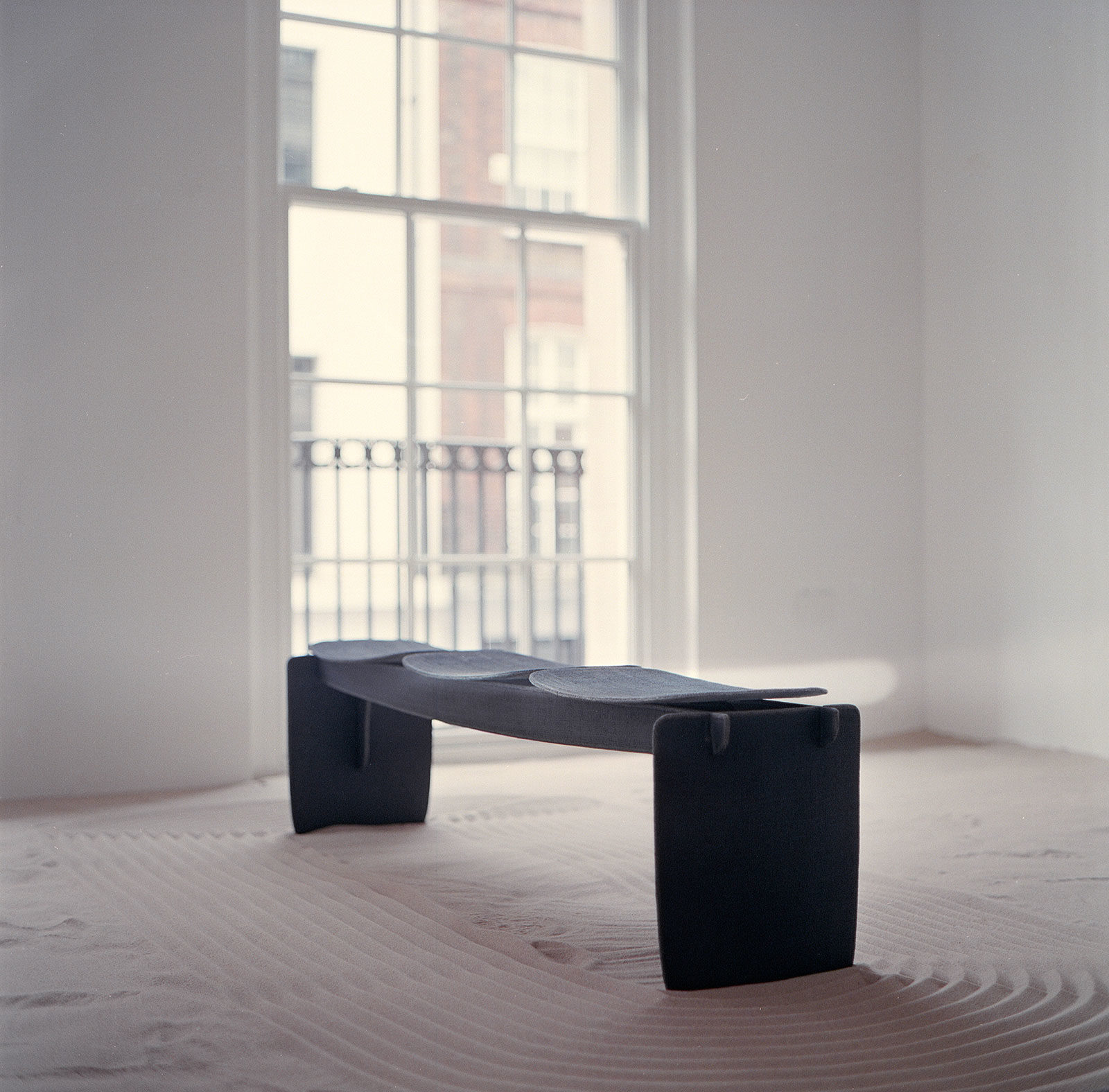
Aki+Arnaud Cooren, ‘Tiss-Tiss Banc 3 Assises’, 2019
COURTESY: Aki+Arnaud Cooren & Carpenters Workshop Gallery / PHOTOGRAPH: Teddy Freeman
The installation is playfully interactive: visitors can sit on the slender seating. These bear the imprint of linen (‘Tiss-Tiss’ derives from the French word for fabric – ‘tissu’), creating an illusion of softness and suggestion of upholstery, given that the pieces are solid and rigid. By contrast, the lamp, which casts light ceilingwards, looks anti-gravitational and ethereal. These pieces seem more influenced by Japanese than French culture – with their gently cupped seats, the stools evoke shinto shrines, while the collection nods to Aki’s exposure to metalwork and textile design while growing up in Tokyo (her father, a silversmith, was a student of Japanese textile designer Keisuke Serizawa).
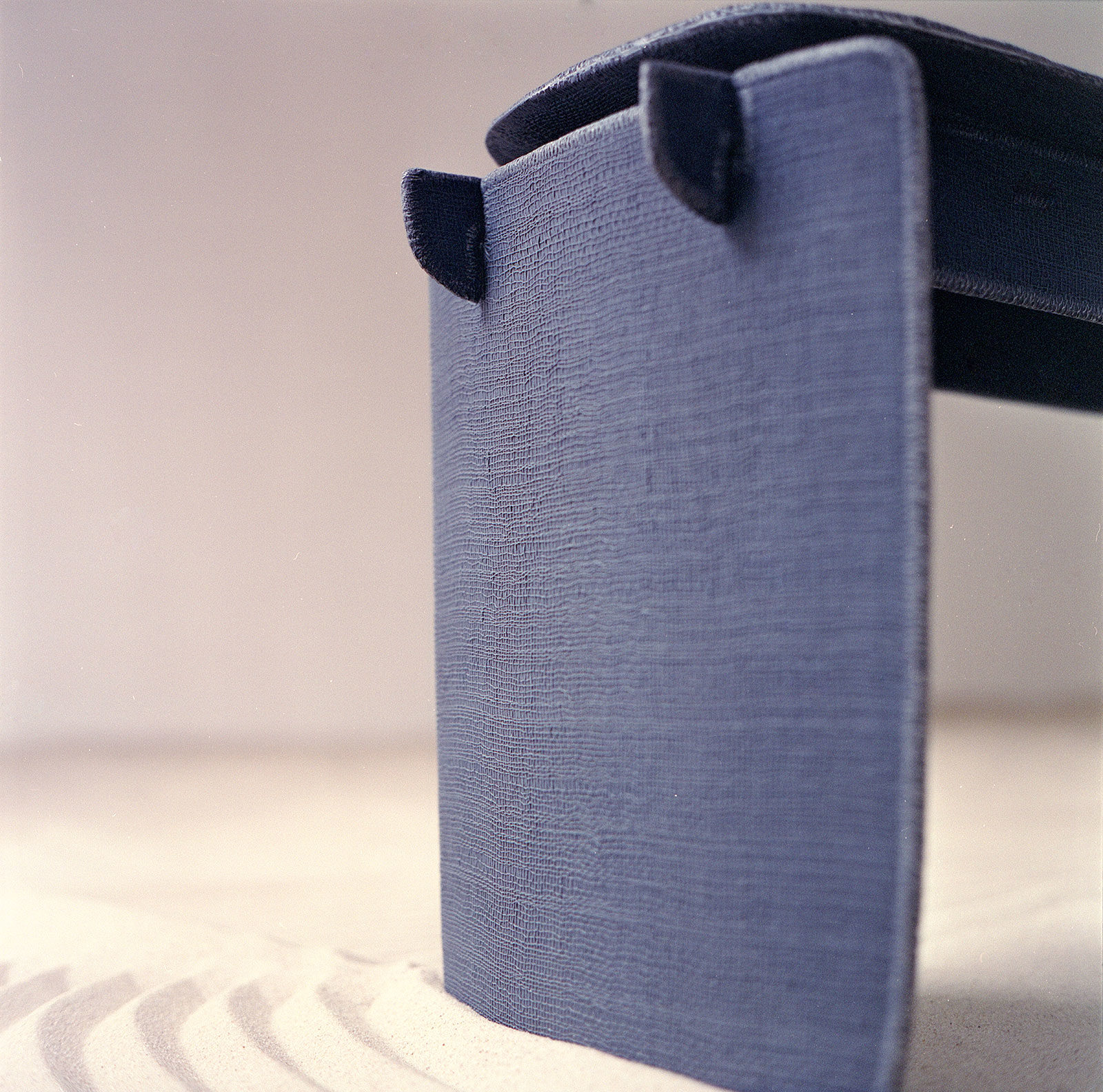
Aki+Arnaud Cooren, ‘Tiss-Tiss Tabouret Bas A’, 2019 (detail)
COURTESY: Aki+Arnaud Cooren & Carpenters Workshop Gallery / PHOTOGRAPH: Teddy Freeman
The Beautiful Grain: Eleven Designers Explore the Wonderful World of Wood
Gallery FUMI
Coincidentally, I noticed that the floor at Mayfair gallery FUMI was also sand-coloured, although this time it was a smooth carpet in a sawdust shade – appropriately, given that wood is the focus of its group show. Featuring new pieces by 11 designers from across the world, this exhibition feels highly topical given our heightened appreciation of nature during the pandemic and our ever-growing concern for the environment.
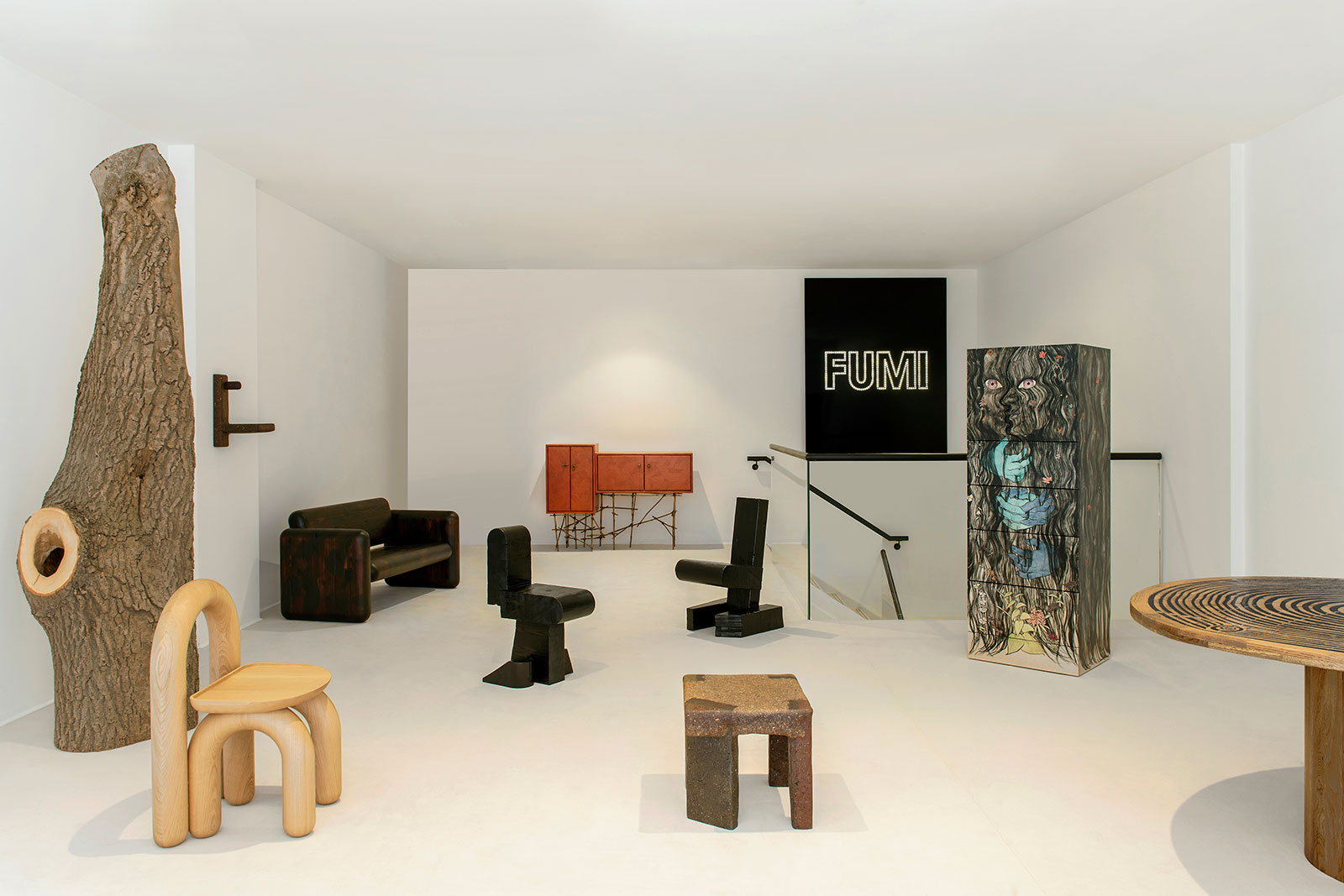
Installation view, ‘The Beautiful Grain’
COURTESY: Gallery FUMI
A quote from Frank Lloyd Wright writ large on one wall – “Wood is universally beautiful to man. It is the most humanly intimate of all materials” – succinctly captures the spirit of the show. It also suggests that this elemental material is as appealing today as it was to the Arts and Crafts movement, a formative influence on Lloyd Wright. The show celebrates the versatility of wood and highlights how designers are experimenting with it today.
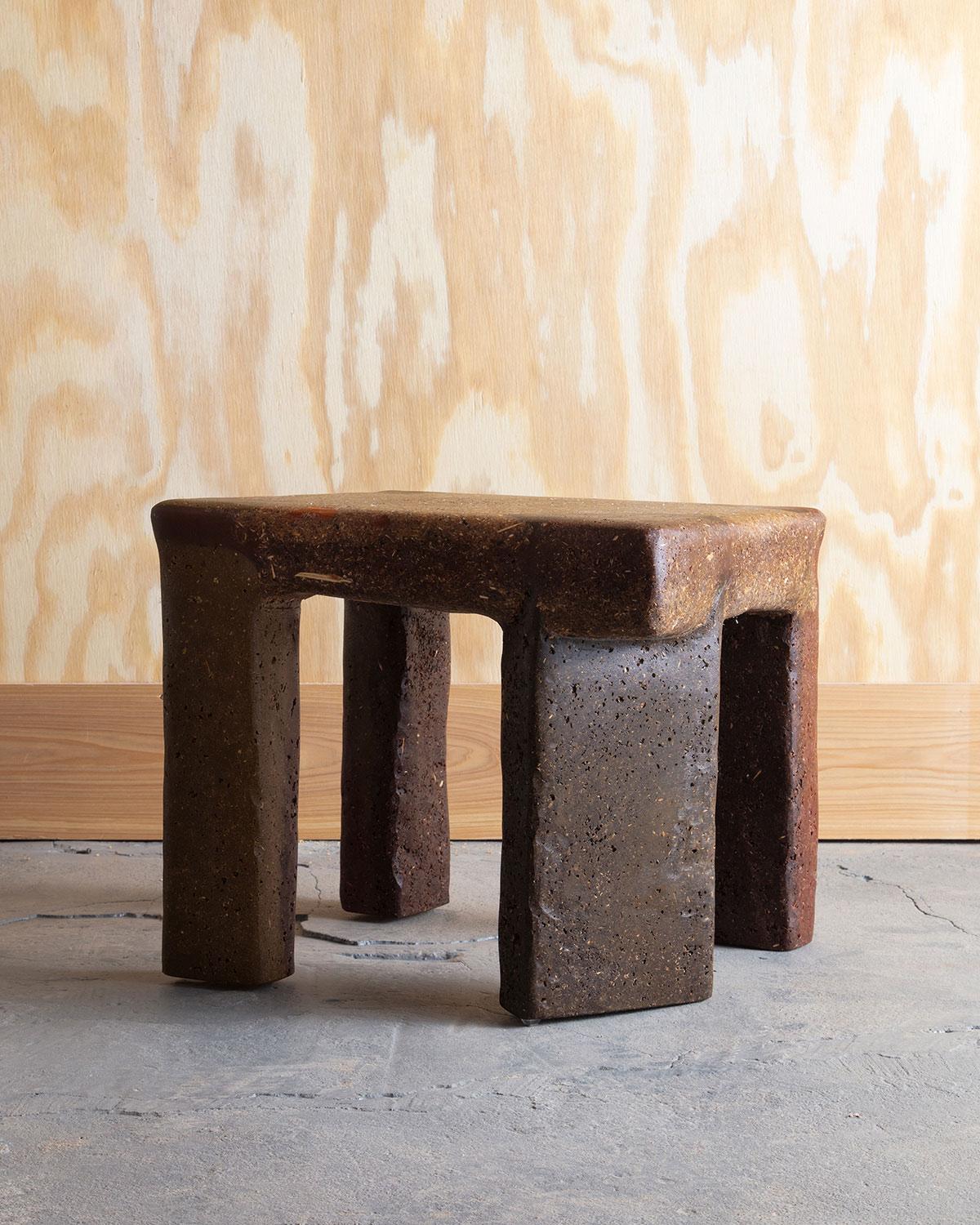
Casey McCafferty, ‘Sawdust Side Table’, 2021
COURTESY: Gallery FUMI and Casey McCafferty / PHOTOGRAPH: Joe Kramm
My eye was first drawn to a tall, idiosyncratic piece decorated with a free-flowing drawing of faces, hands and flowers. By chance, Spanish artist Saelia Aparicio, its creator, was at the gallery and she talked me through the piece, which, she points out, is both sinister and romantic: “It’s a plywood tallboy. On the outside are drawings of plants imported to Britain, such as Japanese knotweed, regarded as weeds. The interior by contrast is colourful and joyous.”
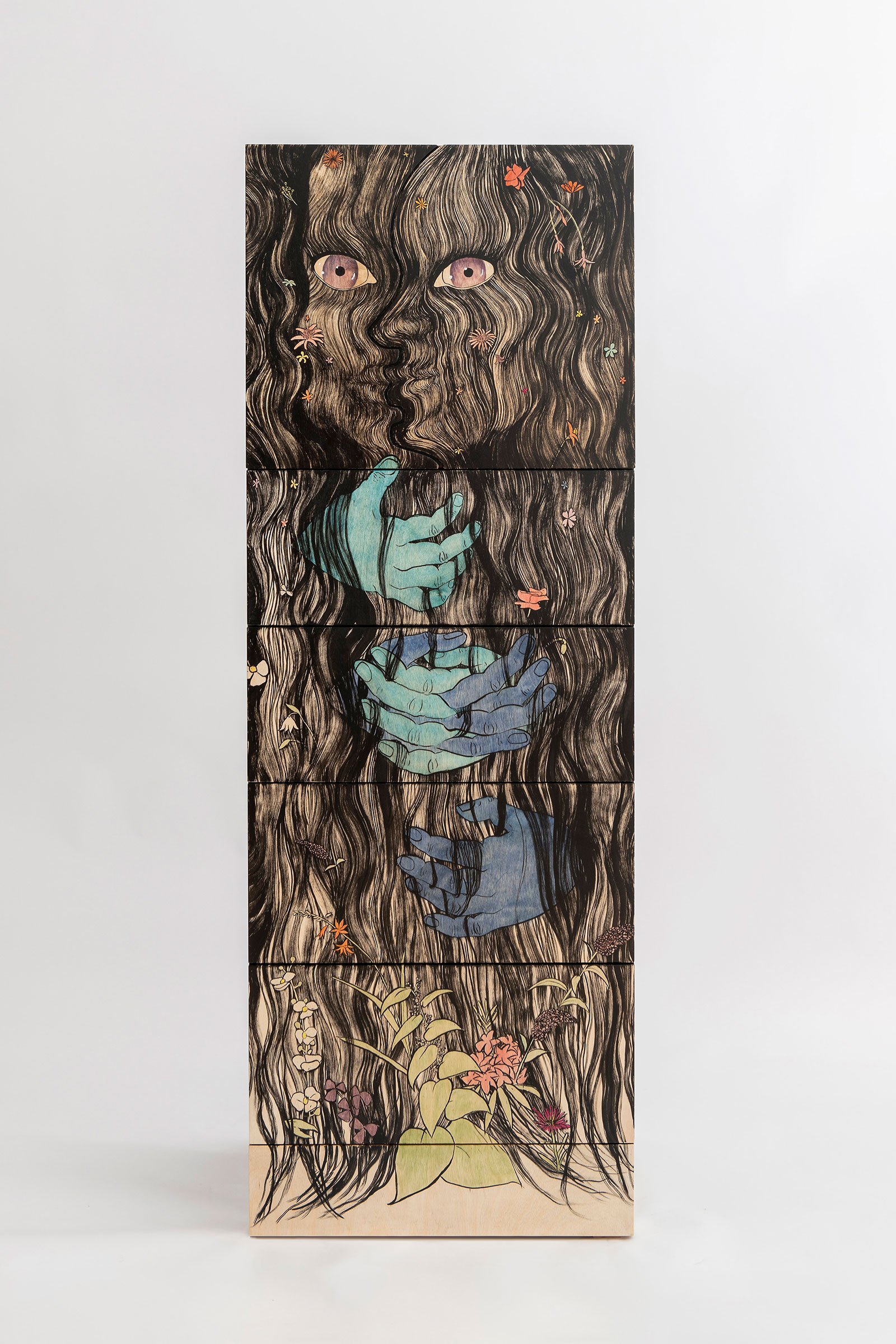
Saelia Aparicio, ‘Tallgirl’, 2021
COURTESY: Gallery FUMI / PHOTOGRAPH: Thomas Joseph Wright / penguinsegg
Near Aparicio’s aptly named ‘Tallgirl’ are pieces specifically concerned with sustainability – Max Lamb’s chunky chairs fashioned from lightweight, sustainable Glulam and New Jersey-based Casey McCafferty’s side table made from combining sawdust, polymer and clay dust. In the gallery’s lower floor are several pieces that are less purist in their use of wood. Take Chinese-born, London-based designer Jie Wu’s arresting resin vases incorporating recycled Chinese rosewood.
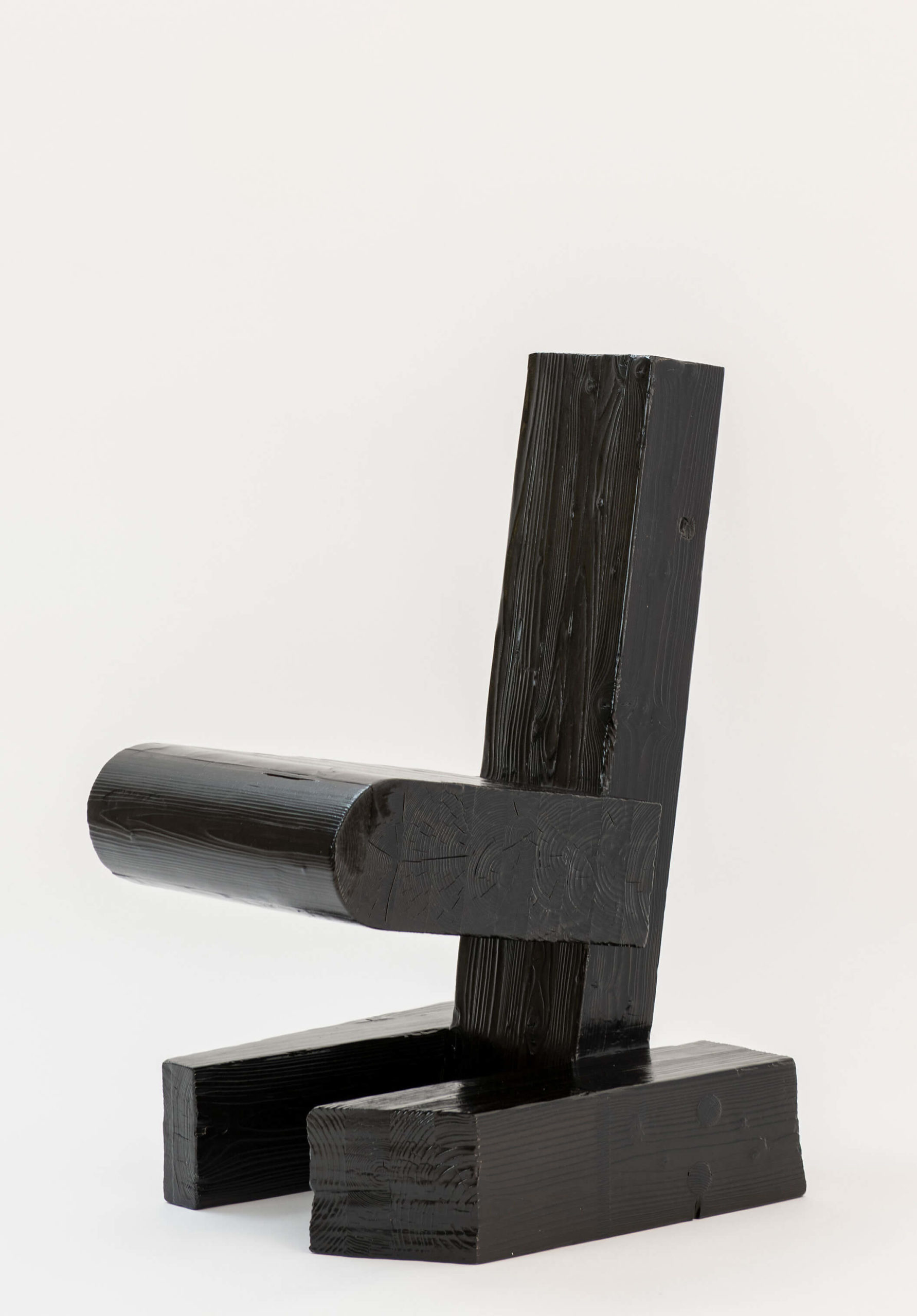
Max Lamb, ‘Glulam Chair’, 2021
COURTESY: Gallery FUMI / PHOTOGRAPH: Thomas Joseph Wright / penguinsegg
“The FUMI show celebrates the versatility of wood and highlights how designers are experimenting with it today”
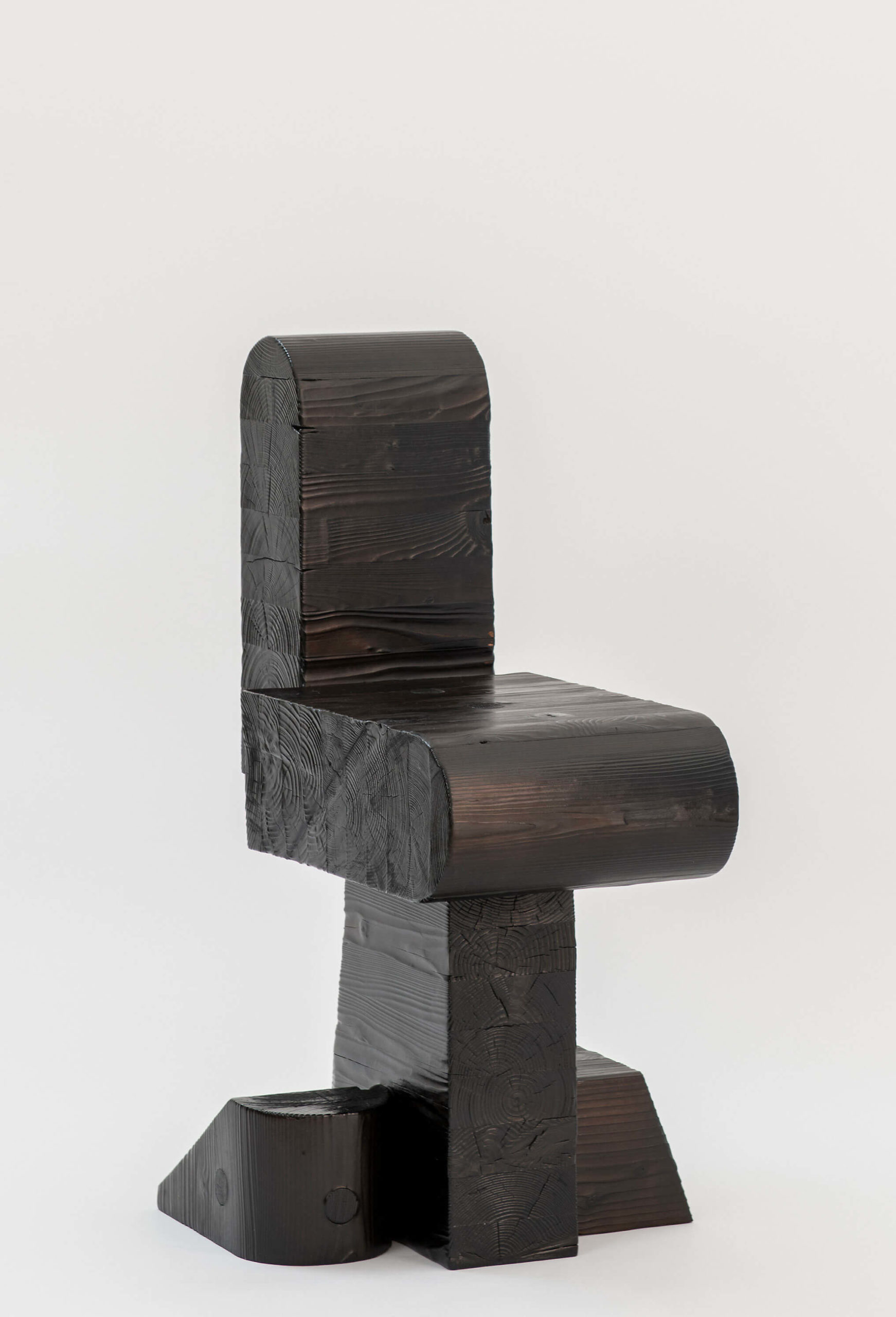
Max Lamb, ‘Glulam Chair’, 2021
COURTESY: Gallery FUMI / PHOTOGRAPH: Thomas Joseph Wright / penguinsegg
“Max Lamb’s chunky chairs are fashioned from lightweight, sustainable Glulam”
Fall Line: Wycliffe Stutchbury
Sarah Myerscough Gallery
In leafy, soothing Barnes in southwest London, Sarah Myerscough Gallery also has a show focusing on wood – this time a solo exhibition of work by the splendidly named artist, Wycliffe Stutchbury, formerly a furniture maker. His work, mostly featuring rows of tiny tiles of wood, perfectly complements this riverside space, a converted boathouse with a ceiling lined with wooden beams. The show includes wall-hung pieces as well ‘Gayles Farm 5’, a gigantic, triptych-like room divider. This is made of fragments of discarded fencing, forming softly undulating panels hung from an oak frame. Its surface has a quietly decorative quality, its tiles artfully arranged to highlight their contrasting dark, mid and pale tones.
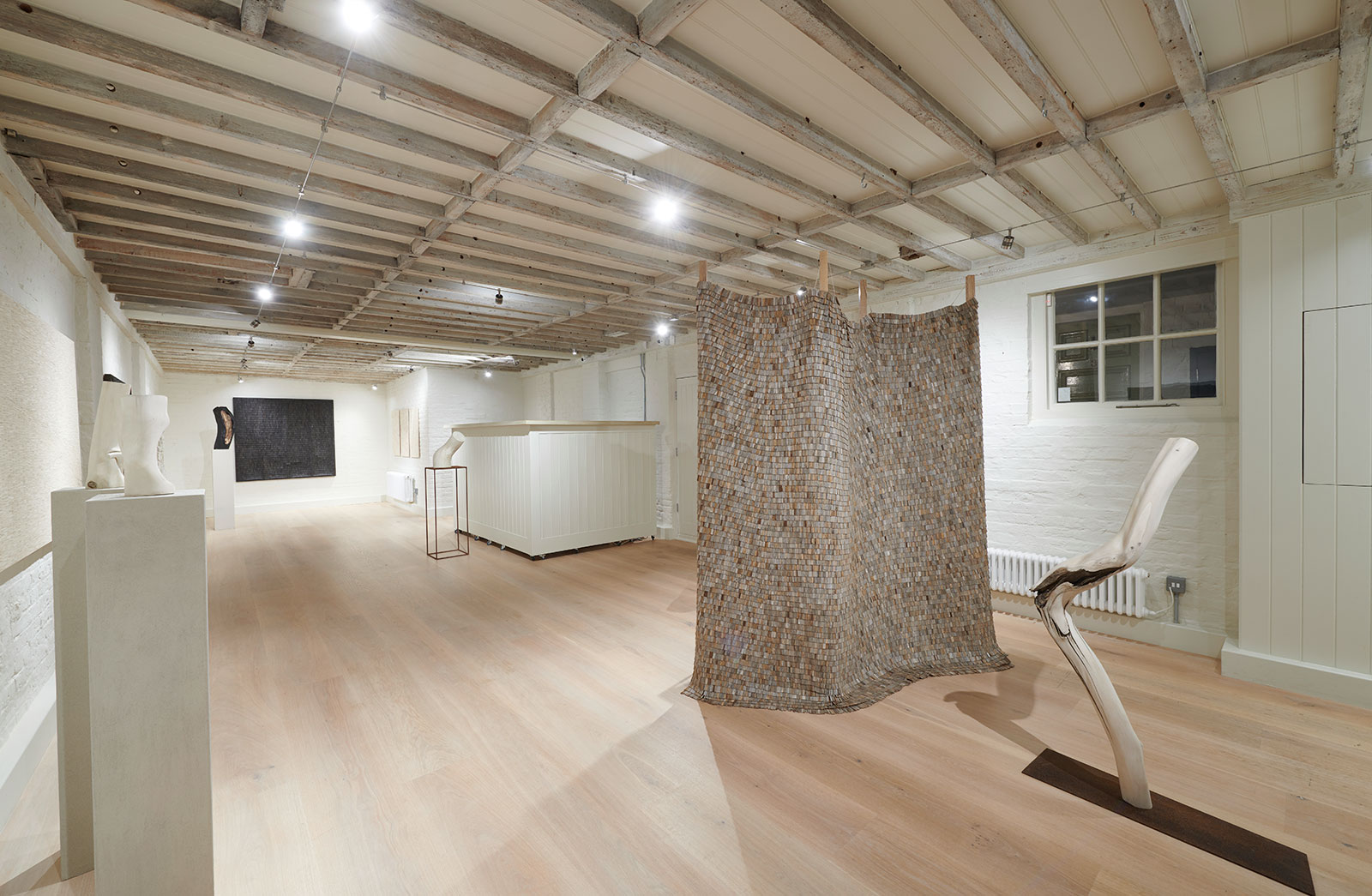
Installation view, ‘Wycliffe Stutchbury’
COURTESY: Sarah Myerscough Gallery
Stutchbury has been influenced by a childhood spent exploring the Downs, near Eastbourne, Sussex – specifically by its trees sculpted by battering winds. Also on display are his abstract, anthropomorphic sculptures of twisted branches that, denuded of bark, recall human bones. Stutchbury seems equally fascinated by zooming out to see the bigger picture as he is by zeroing in on details: some of his wall-hung pieces, bristling with tiny wood tiles, are redolent of topographical maps or aerial photographs.
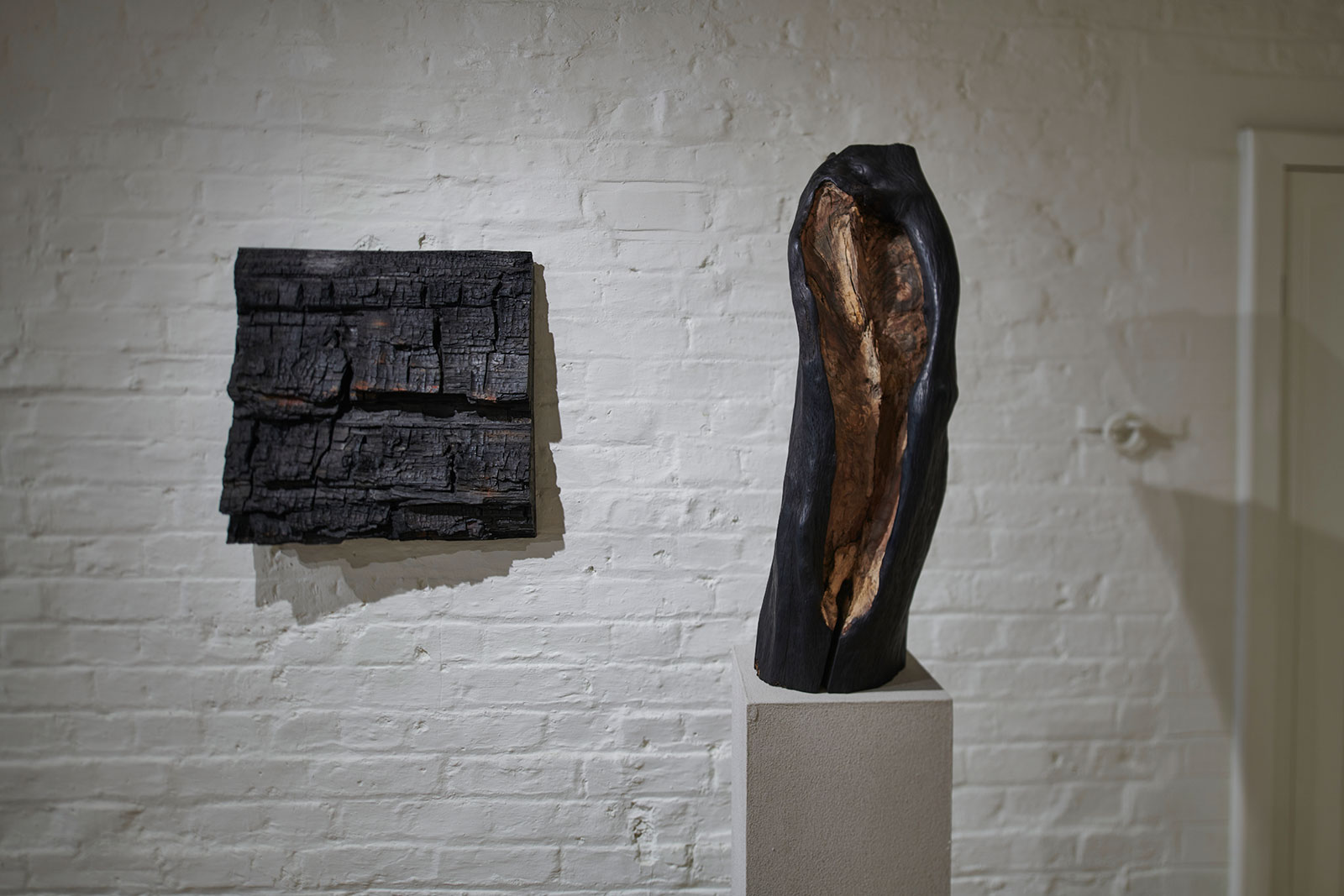
Wycliffe Stutchbury, ‘Hundred Foot Drain 12’, 2020 (left); ‘West Dean 2’, 2020 (right)
COURTESY: Sarah Myerscough Gallery
David Gill gallery
Aki+Arnaud Cooren at Carpenters Workshop Gallery
The Beautiful Grain at Gallery FUMI
Wycliffe Stutchbury: Fall Line at Sarah Myerscough Gallery




